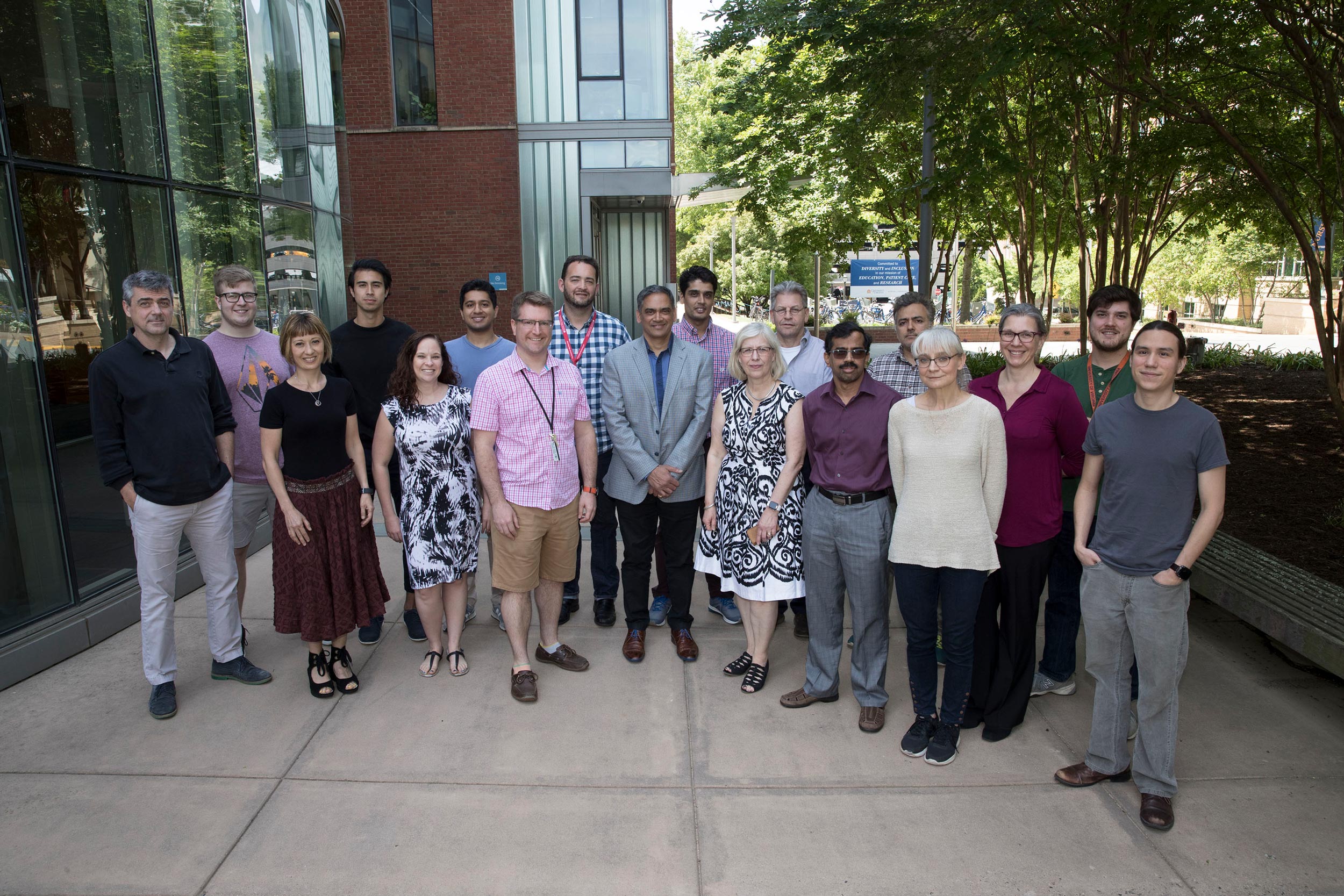A groundbreaking research collaboration at the University of Virginia School of Medicine that is shedding light on everything from cancer to diabetes to cardiovascular disease has received $12.5 million from the National Institutes of Health.
The grant funding from the National Heart, Lung and Blood Institute will support the next five years of research for an initiative that is unusual both in its focus and its approach.
Rather than studying a particular disease, the initiative seeks to understand how cells communicate via “pannexin channels” in their membranes. By discovering exactly how that communication occurs, the researchers aim to manipulate the channels to better treat a host of today’s greatest health threats. For example, blocking pannexin channel-mediated communication can help reduce high blood pressure.
“Most [newly developed] drugs either fail or do not work properly, because we do not have a very good mechanistic handle on how the targets of the drugs work, or the associated complications,” said researcher Kodi Ravichandran, who chairs UVA’s Department of Microbiology, Immunology and Cancer Biology. “The approach taken by this team allows us to understand exactly how the pannexin channels function, as well as perform drug screens that give us very specific tools to tackle this channel, both to activate it and inhibit it as needed. [That will let us] address it in the context of hypertension, atherosclerosis, fatty liver disease, inflammation and related diseases.”
Scientists Assemble
For this ambitious mission, UVA has assembled an interesting mix of scientists who each provide a very particular set of skills. The project includes teams led by Ravichandran, an expert on how cells die in the body; Douglas A. Bayliss, chair of UVA’s Department of Pharmacology and an expert on channel mechanisms; Brant Isakson of the Department of Molecular Physiology and Biological Physics, an expert on hypertension and vascular diseases; and Norbert Leitinger of UVA’s Department of Pharmacology, an expert on metabolic syndromes. In addition, their work is supported by research cores at the School of Medicine led by Ulrike Lorenz of the Carter Immunology Center and the Department of Microbiology, Immunology and Cancer Biology, an expert on animal models of human diseases; and Bimal Desai of the Department of Pharmacology, an expert on cell membrane channels and cellular communication.
“The beauty of such a large, wide effort is that we can take approaches that attack the same problem from multiple angles,” Bayliss said. “I think we are very lucky to have a group that works exceedingly well together, and that’s a testament to the highly collaborative nature of the School of Medicine.”
Discoveries made by the group are already having a big impact in the scientific community. Papers published as part of the project have appeared in high-profile scientific journals, including Nature, Nature Communications, Science Signaling, Circulation Research, Journal of Clinical Investigation and Nature Immunology. The group’s findings already have been cited in subsequent research by other scientists around the world more than 1,000 times. “This is a fantastic example of a true team effort, where the science comes first, and we enjoy and celebrate each other’s individual and collective successes,” Isakson said.
“Metabolic diseases are complex, with multiple cell types involved, and the communication between cells at the tissue level and at the whole-organism level is really critical for treating diseases such as fatty liver disease and diabetes,” Leitinger said. “Our goal over the next five years is to make true inroads into some of these metabolic diseases using a combination of in vitro and in vivo approaches.”
Eight trainees who participated in the project over the past five years have already received positions in other universities and industry. “This original program project has also spawned new projects within the School of Medicine on the role of pannexin channels in lung injury and aneurysms,” Ravichandran noted.
About the Grant
The new grant is No. HL-120840. Including the previous five years of funding, the National Heart, Lung and Blood Institute has now provided the ambitious research project with $25 million.
“To get one of these grants is very tough, because it involves multiple projects, multiple people, and then they all have to work as a team together,” Desai said.
“To repeat that feat again and get a similar grant renewed in five years – I think it speaks really highly for the team as a whole, and how our team is perceived in a positive way by outside review panels,” Lorenz said.
To keep up with the latest medical research news from UVA, subscribe to the Making of Medicine blog.
Media Contact
Article Information
May 23, 2019
/content/125-million-grant-funds-uva-collaboration-shedding-light-major-diseases

